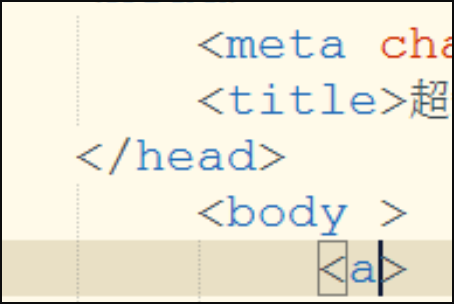
1、首先是cat
cat最常用的就是一次性显示文件的所有内容,如果一个文件的内容很多的话,那么就不是很方便了,所以一般用于查看内容比较少的文本文件;
cat另外一个很有用的方法就是可以原样输出想要保留特定格式的内容。
1
2
3
4
5
6
7
8
9
[root@localhost ~]# cat <> this is test> hello world> hello Linux PHP MySQL Apache Nginx> Athis is testhello worldhello Linux PHP MySQL Apache Nginx[root@localhost ~]#其中<<后面随意跟一个字母,然后在结束那一行的首字母以这个字母结束,即可原样输出内容。因为cat是一次性的显示所有内容不方便,所以出现了more命令2、more命令more命令,它可以指定显示多少行(不指定时,默认显示一屏),注意只能按Space键或者按 f 键:显示文本的下一屏内容。按Enier键:只显示文本的下一行内容。按b键:显示上一屏内容。按q键:退出显示内容操作1234567[root@localhost ~]# more -5 a.txtthis is 1this is 2this is 3this is 4this is 5--More--(2%)more命令加一个数字表示一次显示几行。3、less命令less与more命令很相似,但是用法比较单调,一次性显示一屏,然后使用和more一样的快捷键:按Space键或者按 f 键:显示文本的下一屏内容。按Enier键:只显示文本的下一行内容。按b键:显示上一屏内容。按q键:退出显示内容操作4、head命令和tail命令顾名思义,head显示文件的前一部分内容,tail显示文件末尾部分的内容。在不指定显示的行数时,都默认为10行123456789101112131415161718[root@localhost ~]# head a.txtthis is 1this is 2this is 3this is 4this is 5this is 6this is 7this is 8this is 9this is 10[root@localhost ~]# head -5 a.txtthis is 1this is 2this is 3this is 4this is 5[root@localhost ~]#5、nl命令显示文件的内容,并且每一行的行首会显示行号。1234567891011121314[root@localhost ~]# nl a.txt1 this is 12 this is 23 this is 34 this is 4[root@localhost ~]# head -3 a.txtthis is 1this is 2this is 3[root@localhost ~]# head -3 a.txt | nl1 this is 12 this is 23 this is 3[root@localhost ~]#6、tee命令tee命令在单独使用的时候,可以将键盘输入的内容重定向(存入)后面的文件中,注意是以覆盖重定向(是>而不是>>),以ctrl+c结束输入。1234567891011121314151617[root@localhost ~]# cat a.txt[root@localhost ~]# tee a.txthello worldhello worldThis is shell scriptThis is shell script^C[root@localhost ~]# cat a.txthello worldThis is shell script[root@localhost ~]# tee a.txtwill clear the contentwill clear the content^C[root@localhost ~]# cat a.txtwill clear the content[root@localhost ~]#于是乎,tee可以与其他命令(如上面的各个命令)一起配合使用,在显示前一条命令的结果的同时,将内容保存一份(即将内容重定向到文件中),达到既显示内容,又保存内容的目的。12345678910111213141516171819202122232425[root@localhost ~]# head -5 a.txt | tee b.txtthis is 1this is 2this is 3this is 4this is 5[root@localhost ~]# cat b.txtthis is 1this is 2this is 3this is 4this is 5[root@localhost ~]# tail -5 a.txt | tee c.txt | nl1 this is 1972 this is 1983 this is 1994 this is 200[root@localhost ~]# cat c.txtthis is 197this is 198this is 199this is 200
> this is test
> hello world
> hello Linux PHP MySQL Apache Nginx
> A
this is test
hello world
hello Linux PHP MySQL Apache Nginx
[root@localhost ~]#
其中<<后面随意跟一个字母,然后在结束那一行的首字母以这个字母结束,即可原样输出内容。
因为cat是一次性的显示所有内容不方便,所以出现了more命令
2、more命令
more命令,它可以指定显示多少行(不指定时,默认显示一屏),注意只能
按Space键或者按 f 键:显示文本的下一屏内容。
按Enier键:只显示文本的下一行内容。
按b键:显示上一屏内容。
按q键:退出显示内容操作
1
2
3
4
5
6
7
[root@localhost ~]# more -5 a.txt
this is 1
this is 2
this is 3
this is 4
this is 5
--More--(2%)
more命令加一个数字表示一次显示几行。
3、less命令
less与more命令很相似,但是用法比较单调,一次性显示一屏,然后使用和more一样的快捷键:
按Space键或者按 f 键:显示文本的下一屏内容。
按Enier键:只显示文本的下一行内容。
按b键:显示上一屏内容。
按q键:退出显示内容操作
4、head命令和tail命令
顾名思义,head显示文件的前一部分内容,tail显示文件末尾部分的内容。在不指定显示的行数时,都默认为10行
1
2
3
4
5
6
7
8
9
10
11
12
13
14
15
16
17
18
[root@localhost ~]# head a.txt
this is 1
this is 2
this is 3
this is 4
this is 5
this is 6
this is 7
this is 8
this is 9
this is 10
[root@localhost ~]# head -5 a.txt
this is 1
this is 2
this is 3
this is 4
this is 5
[root@localhost ~]#
5、nl命令
显示文件的内容,并且每一行的行首会显示行号。
1
2
3
4
5
6
7
8
9
10
11
12
13
14
[root@localhost ~]# nl a.txt
1 this is 1
2 this is 2
3 this is 3
4 this is 4
[root@localhost ~]# head -3 a.txt
this is 1
this is 2
this is 3
[root@localhost ~]# head -3 a.txt | nl
1 this is 1
2 this is 2
3 this is 3
[root@localhost ~]#
6、tee命令
tee命令在单独使用的时候,可以将键盘输入的内容重定向(存入)后面的文件中,注意是以覆盖重定向(是>而不是>>),以ctrl+c结束输入。
1
2
3
4
5
6
7
8
9
10
11
12
13
14
15
16
17
[root@localhost ~]# cat a.txt
[root@localhost ~]# tee a.txt
hello world
hello world
This is shell script
This is shell script
^C
[root@localhost ~]# cat a.txt
hello world
This is shell script
[root@localhost ~]# tee a.txt
will clear the content
will clear the content
^C
[root@localhost ~]# cat a.txt
will clear the content
[root@localhost ~]#
于是乎,tee可以与其他命令(如上面的各个命令)一起配合使用,在显示前一条命令的结果的同时,将内容保存一份(即将内容重定向到文件中),达到既显示内容,又保存内容的目的。
1
2
3
4
5
6
7
8
9
10
11
12
13
14
15
16
17
18
19
20
21
22
23
24
25
[root@localhost ~]# head -5 a.txt | tee b.txt
this is 1
this is 2
this is 3
this is 4
this is 5
[root@localhost ~]# cat b.txt
this is 1
this is 2
this is 3
this is 4
this is 5
[root@localhost ~]# tail -5 a.txt | tee c.txt | nl
1 this is 197
2 this is 198
3 this is 199
4 this is 200
[root@localhost ~]# cat c.txt
this is 197
this is 198
this is 199
this is 200
标签:脚本,文字





















